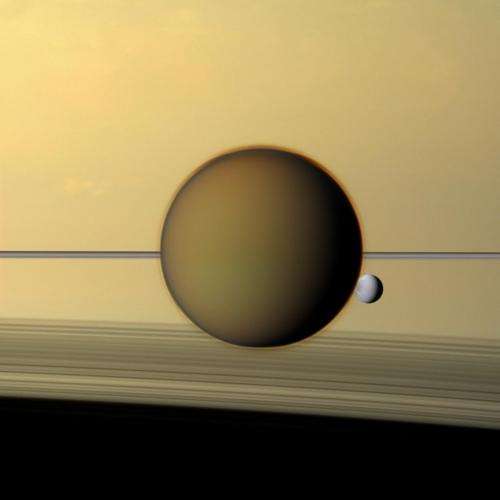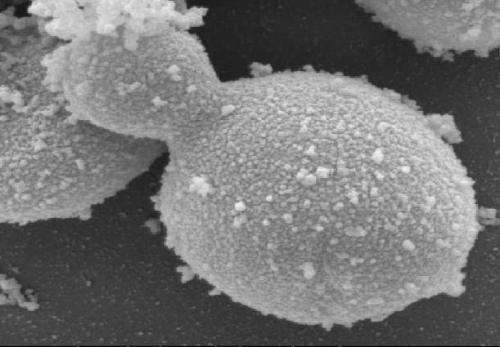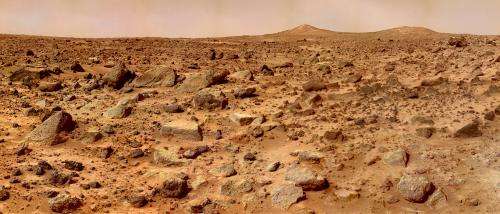How did life become complex, and could it happen beyond Earth?

When astrobiologists contemplate life on nearby planets or moons, they often suggest such life would be simple. Instead of there being some kind of multicellular organism on, say, Jupiter's moon Europa, scientists instead aim to find something more like a microbe.
But from such simple life, more complex life forms could eventually come to be. That's what happened here on planet Earth, and that's what could happen in other locations as well. How did the chemistry evolve to get life to where we are today? What transitions took place?
Frank Rosenzweig, an evolutionary geneticist at the University of Montana, is looking into such questions over the next five years with funding from the NASA Astrobiology Institute. His lab studies how life evolves "complex traits," factors that influence everything from lifespan to biodiversity.
"Over my career, I've been interested in what are the genetic bases of adaptation and how do complex communities evolve from single clones," Rosenzweig said. "Related to these questions are others such as how do the genetic 'starting point' and ecological setting influence the tempo and trajectory of evolutionary change."
Shopping for life in the Solar System
Complex life is only known to exist on Earth, but scientists aren't ruling out other locations in the Solar System. Our understanding of life's evolution could be informed by studying the Saturnian moon Titan, whose hydrocarbon chemistry is considered a precursor to a living system. Researchers recently tried to replicate a substance in Titan's atmosphere called tholins, which are organic aerosols created from solar radiation hitting the methane and nitrogen atmosphere.
Understanding how tholins and other substances are formed on Titan could give researchers a picture of how early Earth evolved life. Also, studying how Earthly life-forms and their biochemical precursors evolved from simple subunits to successively more complex and interdependent systems could give hints of how life might evolve on other moons or planets.

On Earth, examples of these transitions include collections of single proteins evolving into protein networks. For example, single-celled bacteria evolve into eukaryotic cells that contain two, or even three genomes. Also, competing microbes come together to form cooperative systems, such as microbial mats in hot springs and microbial biofilms lining the human gut. Each of these transitions results in increased bio-complexity, interdependence and a certain degree of autonomy for a new whole that is more than the sum of its parts.
Rosenzweig's research developed out of previous NASA grants over the past six years.
"There is, and still needs to be a lot of work done on chemical evolution, prebiotic (pre-life) evolution, extreme environments and bio-signatures," Rosenzweig said. "It struck me that it might be worthwhile trying to convince NASA to add to its research portfolio a set of proposals focused on understanding the genetic basis underlying major evolutionary transitions that have led to higher-order complexity."
As such, Rosenzweig's new research will focus on four areas where a complex system has arisen from simpler elements: metabolism, the eukaryotic cell, mutualism (co-operating species) and multicellularity. He will also look into a fifth area—mutations and gene interactions—that critically determines how quickly such complex systems can arise. He believes that lab experiments aimed at replicating key aspects of the evolution of life on Earth can better inform how we search in life-friendly locations on Mars, Europa, Saturn's moon Titan, or elsewhere.
Rosenzweig plans to have eight different teams focusing on questions of evolution and changes from simple to more complex life. To integrate his teams' experimental results into a broader framework he recruited theoreticians in the areas of population genetics and statistical physics.
Applications beyond Earth

Rosenzweig's previous NASA funding came from the Exobiology and Evolutionary Biology Program. The first project, initiated in 2007, examined how genetic material (or genomes) evolve in yeast species that were cultured under limited resources. A second project, initiated in 2010, is investigating how founder cells in E. coli genotypes, and the environment in which they evolve, influence the diversity and stability of subsequent populations.
The first project led to an unexpected finding: stress may increase the frequency with which genome sequences are rearranged. Stress introduces new chromosomal variants into the species' population that could prove beneficial under challenging circumstances. Indeed, previous studies have indicated that new chromosomal variants are stress resistant. In 2013, Rosenzweig's team, led by University of Montana research professor Eugene Kroll, began studying how yeast cultures respond to starvation.
This new line of inquiry has already led to one major publication entitled, "Starvation-associated genome restructuring can lead to reproductive isolation in yeast," which was published in PLoS One in 2013. Therein, Kroll and Rosenzweig further show that yeast containing stress-adaptive genomic rearrangements become "reproductively isolated" from their ancestors, suggesting that, at least in lower fungi, geographic isolation may not be required to generate new species. A new project through NASA's Exobiology and Evolutionary Biology Program, awarded Summer 2014, will enable the team to tease out the genetic mechanisms that underlie adaptation and reproductive isolation in starved yeast.

A distinguishing feature of this research, Rosenzweig notes, is that whereas most studies look at species' performance in relatively benign environments, the yeast are studied under near-starvation conditions. This kind of severe stress may be a closer analog to what real species face in nature as populations genetically adapt to drastically altered circumstances. Inasmuch as starvation may serve as a cue to any kind of stress, from diminished resources to greatly altered temperature to an invasion by superior competitors, the results of this study should have implications for life on other planets.
Indeed, a major theme that runs through all of these investigations is that by studying evolutionary processes in the laboratory using simple unicellular species, we can expect to uncover rules that govern the tempo and trajectory of evolution in any population of self-replicating entities whose structure and function are programmed by information molecules.
"What I would like fellow astrobiology researchers to be alert to is evidence of differentiation, either at the level of different proteins in a metabolic network, different genotypes in a population of a given species, different genomes in a single cell, or different cells in a multicellular organism. In each case differentiation opens the door not only to competition but also to cooperation between variants, enabling a division of labor." he said. "We should be mindful that, however they may be encoded, lifeforms are likely to have differentiated on other worlds. Therefore, we should be alert to the signatures left by these more complex forms of life."
More information: Kroll E, Coyle S, Dunn B, Koniges G, Aragon A, et al. (2013) "Starvation-Associated Genome Restructuring Can Lead to Reproductive Isolation in Yeast." PLoS ONE 8(7): e66414. DOI: 10.1371/journal.pone.0066414
Journal information: PLoS ONE
Source: Astrobio.net
This story is republished courtesy of NASA's Astrobiology Magazine. Explore the Earth and beyond at www.astrobio.net .


















